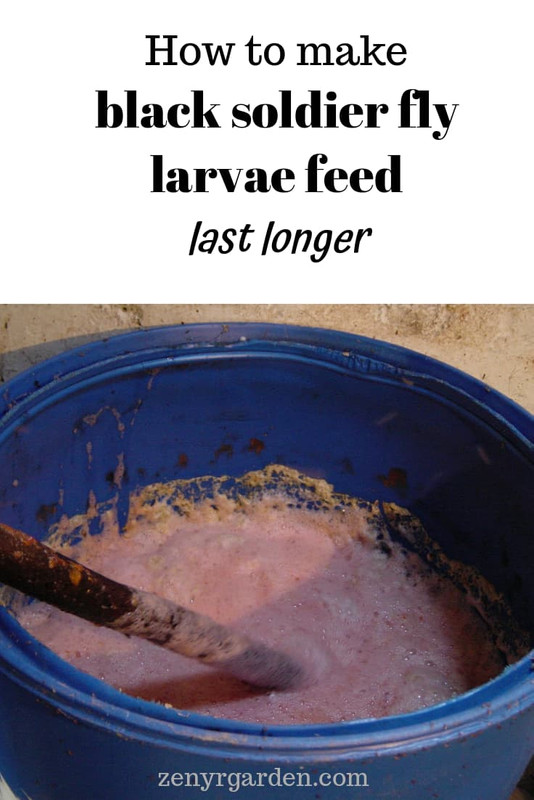Sometimes, the supply of fresh foods for black soldier fly larvae may not be as steady as we want. Maybe the food spoils before the BSF have a chance to munch on them. A way to solve this is to make longer-lasting food that is both odor-free & nutritional for the baby larvae. Let's have some fun checking out the fermenting method and let's see right below:
Fermenting the Foods
Fermenting the foods for the larvae extends the storage time for up to 3-6 months. This means we can store the foods for a long period of time without worrying about mold/houseflies or foul smell.
Perhaps in a year, we only need to prepare the foods twice. When fermented, it will give off a slight acidic smell that's totally bearable & doesn't stink. This method is suitable for farms or someone who raise BSF indoors near residential areas.
The recipe we'll use today is:
- 40 gram EM/ lactic acid bacteria /bread yeast
- 1 kg wheat bran/rice bran
- 80 kg yam/potato/soybean waste/cassava tuber
- 200 gram sugar/molasses
- 40 liters of water
If you'd like to see how to make your own EM or lactic acid bacteria easily at home, check out this post later:
>> Blog post: How to make EM1 effective microorganism (3 secret recipes)
Why Add Yeast?
To ferment 80 kg food waste, we'll have the yeast/fermentor or EM. You can use pre-made packages or make your own. These are the little microbes that get the work done fore us. Those that work best for this are Lactobacillus, Bacillus, Streptomyces, Saccharomyces.
Basically, these are our little mighty warriors. Once they are released into the food waste, they'll do much of the heavy-lifting for us–chewing the food, breaking it down into smaller pieces & reducing the smelly smell for us. Thus, also making the foods last longer in the acidic environment that they've created.
What Is the Wheat Bran For?
Wheat bran, rice bran or rice water really helps in activating these guys. Anything with a good amount of starch will do. The sugar or molasses will be the food for the microbes & helps keep the fermentation process going. If you can't find molasses around your area, sugar cane juice or other types of sugar is also fine.
Mixing the Foods
In a 120-liter bucket (or 55 gallon drum), mix in these components. You can use a heavy-duty electric mixer to save time & effort. Once the mixing is done, place the bucket in a cool, shaded area with a lid on top.
In the first week, remember to open the lid slightly to let off some CO2 gas, a by-product of this fermentation. Then, you can let it sit there & take out some food for the BSF larvae anytime you see fit.
Using the Foods
Some people use the foods when it's about 10 days old. You can let it soak for longer. You may see some white film or fuzz at the top surface & this is completely normal. It won't harm the food source. In simple words, this is like pickles. When you like it, you can take it out for consumption. The foods won't spoil if kept in these conditions.
Making BSF Food Last Longer
The benefit of making the fermented food for BSF larvae is the acidic environment it creates. This acidity makes it nearly impossible for other life forms to survive, except for the very hardy good microbes. The foul smell will also be reduced.
Houseflies, the main cause of your loved ones saying 'Oh it stinks, get it out of the house please', won't be buzzing around anymore. Best of all, the foods will retain most of their nutritional value, they can be kept for longer & will be easier to digest for the larvae.
Have fun exploring & share with us some tips you have. Enjoy! But one last note, don't turn them drunk by alcoholic fermentation. :) But it's your call after all.
Share or pin this post!


